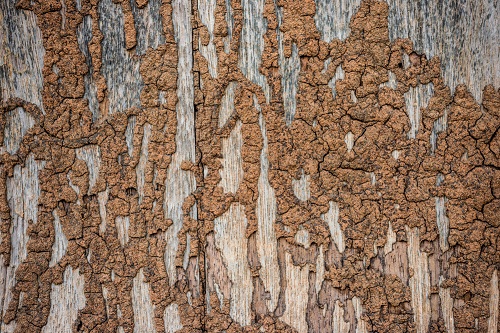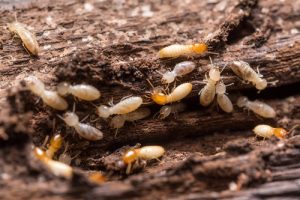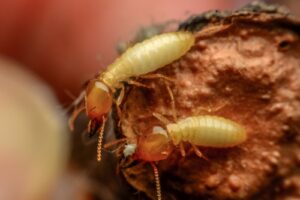
Myrtle Beach termites continually cause damage to many homes, making them a top concern among residents. Termites can easily destroy a home, especially if not treated and resolved immediately. What’s worse is that their presence is often challenging to confirm.
In fact, many homeowners only realize they have a termite infestation when the problem has worsened, particularly when termites have damaged a portion of their walls or foundation.
According to expert in pest control Myrtle Beach, the key to resolving a termite infestation is increased knowledge. Learning more about termites will help homeowners identify whether they are dealing with termites or not. This also helps them effectively ward off termites from infesting their homes.
Facts about Myrtle Beach termites
More than 4,000 species of termites are lurking around the world, with 50 of these in North America. Each species has different characteristics and traits. Some can cause damage in minutes, while others are skilled at hiding and staying unnoticed. Despite this, there is only one termite species in South Carolina, and that is the Eastern Subterranean Termites.
Knowing what type of termite you are dealing with will help you and the pest control experts effectively eliminate them. Keep in mind that different species of termites require different pest control and management methods.
On a nationwide level, the damage that termites cause can cost more than the combined damage from all natural disasters – including wind, hail, hurricanes, and tornadoes – in one year. This is why it is highly recommended for homeowners to educate themselves and increase their knowledge about termites.
Recent reports indicate an increase in termite infestations in many homes. This is based on the rise in the number of calls for assistance that local pest control experts, like Zap Pest Control Inc., have received.
Most often, the first sign of termite infestation is when you see a swarm of flying termites coming out of your walls, trim, and floors. This frequently happens when you punch a hole in the wall to hang your decorations and paintings or accidentally damage your flooring. These areas are where termites often hide. Thus, a small hole in these areas will disturb the termites and cause them to emerge.
 When this happens, you should immediately call a local pest control expert, even if you are not sure whether it is a swarm of flying termites or flying ants. The most important thing is for a professional pest control specialist to arrive at your home as soon as possible to confirm and control the situation.
When this happens, you should immediately call a local pest control expert, even if you are not sure whether it is a swarm of flying termites or flying ants. The most important thing is for a professional pest control specialist to arrive at your home as soon as possible to confirm and control the situation.
Termites have the ability to remain hidden and unnoticed for years, slowly and quietly consuming parts of your home. Thus, the only way for you to confirm their presence in your home is if they come out of their hiding places. Unfortunately, this only happens when their colony is mature, and this can take several years.
However, there is another way to determine whether or not you have a termite infestation at home. You can conduct an overall termite inspection. All you have to do is routinely check for signs of termite presence in your home. These signs primarily include sawdust at the bottom of beams and the foundation, as well as a hollow sound when knocking on walls and beams. For better results, you can opt to hire a professional for yearly termite inspections.
Pest Control Tip: How to Get Rid of Them
The key to successful pest control in Myrtle Beach is knowledge about the specific type of pest you are dealing with. In this article, you’ll learn about a different type of termite, unlike the common termites that damage your home’s foundation. However, this specific type of termite is also common in every home, so it’s essential to understand how to deal with them.
Introducing: Dry-Wood Termites
What differentiates dry-wood termites from common termites is that they do not live underground. They are often found in wood sidings, wood supports in the attic, and roofing as well. They also tend to infest crawlspaces, specifically those near your attic. They are commonly found eating the following:
- Wood molding, particularly your windows’ and doors’ framing.
- Wood siding and roofing.
- Eaves and overhangs.
- Joints and crevices around your doors.
Pest control experts in Myrtle Beach say their swarming season is from September to November. The best time for them to swarm and mate is when there has been a sudden, drastic change in temperature, particularly from cold to warm or hot.
 Detecting the presence of dry-wood termites in your house can be challenging. This is because of their ability to build a chamber inside the wood and stay there for more than a year. They do this by excavating a tunnel inside the wood and closing it once they are inside. They will stay inside the wood for as long as necessary.
Detecting the presence of dry-wood termites in your house can be challenging. This is because of their ability to build a chamber inside the wood and stay there for more than a year. They do this by excavating a tunnel inside the wood and closing it once they are inside. They will stay inside the wood for as long as necessary.
If they cannot find wood to infest, they can also suppress their hunger and stay dormant for an extended period. They often only go out to find a source of food that they can invade. Oftentimes, they return to the same wood they’ve infested before.
How to tell if you have dry-wood termites inside or near your home:
A hollow sound coming from your wooden foundation after knocking on it. This indicates that the termites have succeeded in eating the inside of the wood. You need to hire termite control services.
Visible damage to the wood that appears to be carved out. If you try to pick a hole in the wood, you can easily do so, even with a blunt pocket knife or screwdriver.
Piles of dust and debris near your walls, door and window frames, and foundation. If the dust resembles coarse sand grains, it likely consists of termite fecal matter.
Accumulation of insect wings on your window sills. This means that termites are swarming to get inside your house or to move to another hiding place inside your home.
If you’re looking for a pest control expert to help you eliminate Myrtle Beach termites, call Zap Pest Control now.
Like our Facebook page for more information about pest control services.
Zap Pest Control Inc.
2507 Forestbrook Rd Suite G
Myrtle Beach, SC 29588
843-654-1927
http://zappests.net/
Areas Served: Surfside Beach SC, Carolina Forest SC, Conway SC, Little River SC, North Myrtle Beach SC, Socastee SC, Myrtle Beach SC

No comments:
Post a Comment